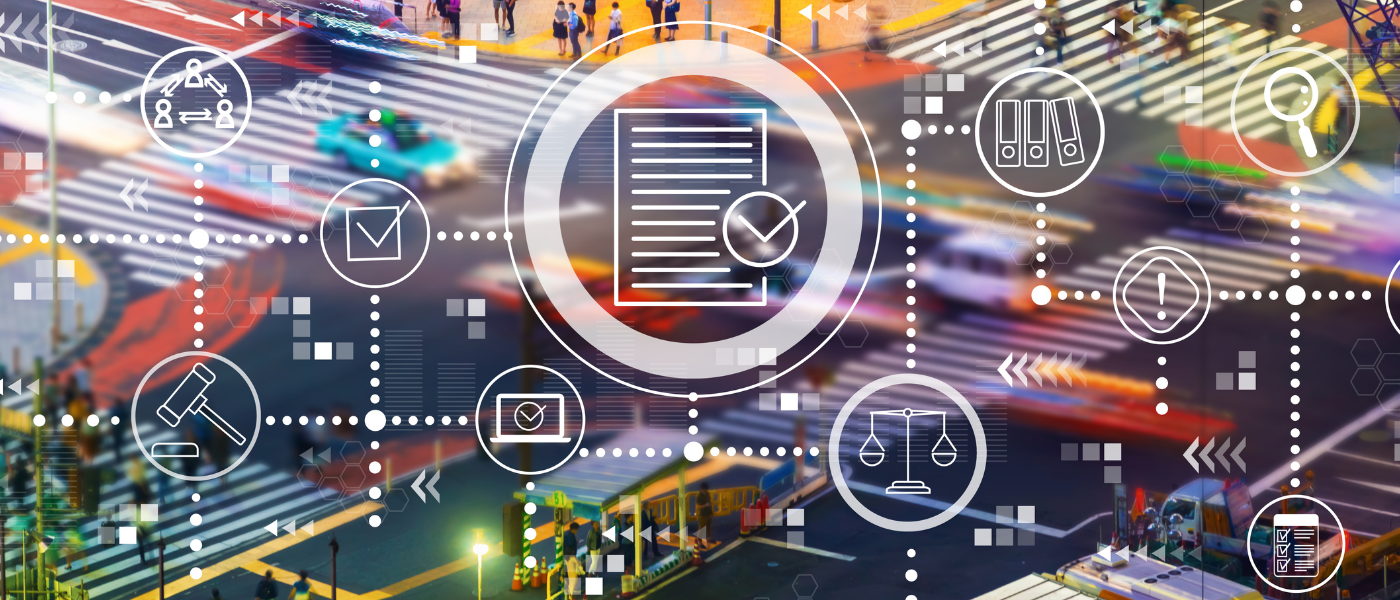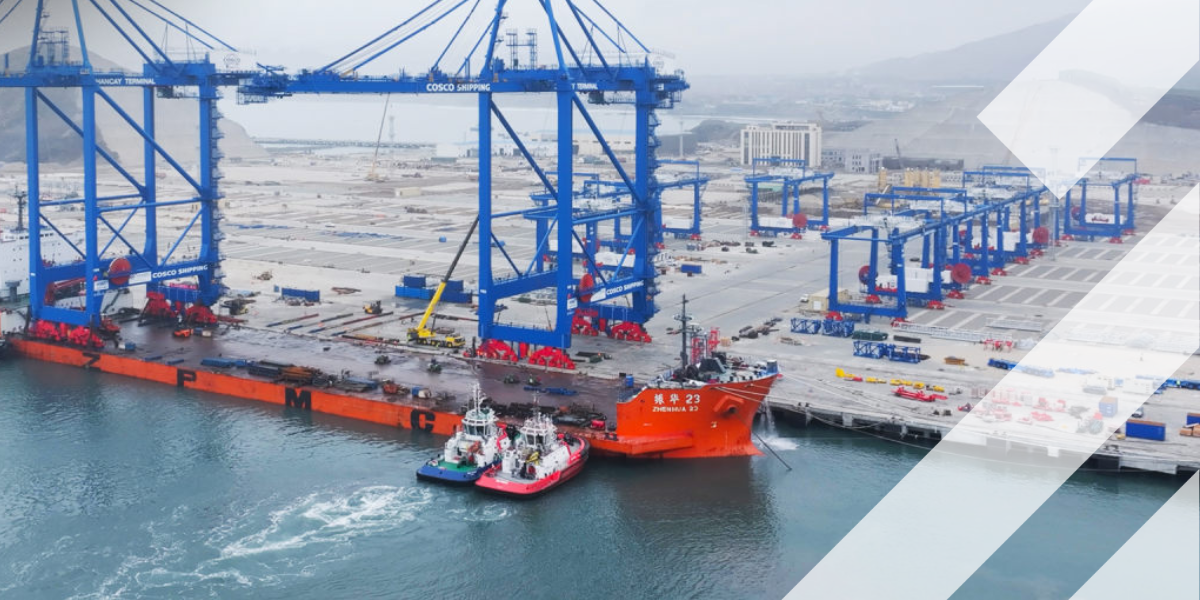Professor Charles Musselwhite and ITS veteran Richard Harris have teamed up at the University of Aberystwyth’s Centre for Transport and Mobility (CeTRaM) in South Wales to focus on the fascinating and prescient topic of people-centric mobility.
Intertraffic: What do you consider to be CeTRaM’s strengths in terms of your intelligent transport thinking and the overall set-up?
Professor Charles Musselwhite (PCM): We don't have any specific educational courses, which is quite interesting in itself. We worked with Professor Pete Merryman, he’s a professor of geography here in Aberystwyth and an expert in what's called mobilities, which is a sort of cultural geography, looking at perspective and movement, and that is movement in its biggest sense, so everything from energies and infrastructure, but also people and goods. Transport comes into that. I’m from the world of psychology and when I joined Aberystwyth about 18 months ago, Pete and I decided to set up a university-wide transport and mobility Research Centre.
They teach transport planning at Cardiff University, but their research is quite a traditional sort of transport engineering planning based stuff. In Wales we've got nice, progressive policies in terms of transport, we've got the active travel bill, we've got things like the Future Generations Act but we've got the 20 mile an hour implementation of default speed limits coming into residential areas next year. I know a couple of people working for the Welsh Government’s transport group and I know how overstretched they are, and I know that they're often looking for consultancy or looking for support in their work. And we thought, well, we could offer some academic support for their work.
Intertraffic: How did you go about setting that up and getting it up and running so quickly?
PCM: The nice thing about this is that we set it up as a research centre and grouped together people who are experts in lots of different backgrounds of transport and mobility across the university and across Wales, as well. We're very keen that our research doesn't sit on dusty shelves, that it's really applied to real life stuff going on. When Richard reached out to us I didn't know he'd moved to Aberystwyth! I've known him for 25 years or so since I did my PhD at Southampton and worked with Mike McDonald and people like. And what I've always done I think over the last 25 years is to really look at transport from a user-centred perspective. So people based thing so psychology is my background. Mike McDonald was great at allowing me to bring a more people-based, psychology-centred element to transport. We’re thinking about where transport might go in the future and this where the subject of Smart Mobility comes into the equation.
We're very keen that our research doesn't sit on dusty shelves, that it's really applied to real life stuff going on
You've got to think about people using it first at the end of the day. And I know this sounds like a cliché but even now that is not the way that funding works and it's still not the way that procurement works. We are still wowed by high tech solutions and this is what Richard has brought out nicely from his experience and background. A lot of intelligent transport solutions are wonderful and can make huge differences to the way we travel, how mobile we are and how safe we are in our vehicles, but we don't maximise or make the most of it because we don’t instinctively look at it from a human-centred point of view. We need much more emphasis on the individual and how they travel, how they behave on the road, where they want to go and a bit about motivations. We look at where technology might help them and this, to me, is people-centric mobility.
We need much more emphasis on the individual and how they travel, how they behave on the road, where they want to go and a bit about motivations

*Photo: Richard Harris (left) and Prof Charles Musselwhite (right)
Intertraffic: Richard, you’ve been one of the mainstays of the ITS industry for the best part of 30 years. How do you fit into the CeTRaM “ecosystem”?
Richard Harris (RH): I contacted Charles because I knew him from 25 years ago and I had just moved from the South East of England to within 15 minutes from the university. They have a facility where they’re going to be developing autonomous agricultural vehicles and I thought I might be useful. I brought all of my old documentation from 25 years of ITS with me I thought that the university would like my archives for their library.
We’ve been talking about running a great little kick off conference, get some interesting people here later in the year and explore the human side of mobility and ITS. Back in the early 2000s I ran the original STREETWISE project that included the National Assembly of Wales with Leighton James and Robert Cone who your readers may well remember. I was always impressed with how quickly we could get things done in Wales as it was one of the few places that gave you the freedom to operate.
I've always been preaching the fact that it's not about the technology. It's about what you actually get out of it. It's the end product. So the technology, the science can be absolutely fantastic, but if it doesn't deliver outcomes it's a waste of time.
I've always been preaching the fact that it's not about the technology. It's about what you actually get out of it. It's the end product
Intertraffic: The idea of people-centric mobility is that the people in question are offered the solutions that they want because they have been listened to? How do you propose that this can be done efficiently and cost-effectively?
RH: Simple – integration. To achieve the transportation element of smart and more liveable cities and regions we need to progress from individual systems and services to an integrated, coordinated and more effective suite of services that work better together. Integration is the key to effective data collection, processing and information and management of transport infrastructure and networks. This does not necessarily mean a single large system is needed. So long as the data required is accessible, networked systems can provide the level of interoperability needed.
In 2023 becoming more efficient is even more urgent as we face the challenges of increased economic pressures, demand for mobility resilience and the environmental challenges of climate change. We need to get more from less. This applies not only to our infrastructures but also to our organisational and institutional governance.
In 2023 becoming more efficient is even more urgent as we face the challenges of increased economic pressures, demand for mobility resilience and the environmental challenges of climate change
Obviously, we have developed and operate increasing numbers of great solutions which improve safety, efficiency, comfort, convenience, accessibility, contribute to economic prosperity, reduce environmental impact and enhance people’s quality of life, but getting the ITS investment message across is still somewhat challenging. ITS must compete for funding along with other transport initiatives. ITS implementation and operation is generally involves revenue costs rather than capital cost and continued adjustment and development are often required to ensure outcomes continue to meet expectations. Unlike new infrastructure projects ITS solutions seldom have a ribbon-cutting photo opportunity or commemorative plaque celebration, which may make them less attractive to elected officials.
PCM: Richard is absolutely spot on. The problem is that people don't always sit down and work out what it is that they want in the first instance. So there's got to be some more work done on what you want the outcomes to be in order for them to find the right technologies to suit. It's about the simplicity of the message: [this] technology could make a huge, huge difference if it’s deployed in the right way and put in the right place. We've probably already got loads of technology that will solve of our crises already but it’s just how we put them together or put them in the right place or understand how we need them. That’s what we are concerned with at CeTRaM.

Intertraffic: If we are talking about integrated transport systems, as a whole, why has the end-user, or the customer, not been central to the industry’s thinking before? Who were the solutions designed for if not the people that are going to benefit from them?
Customer engagement is absolutely vital, of course, but what we've not been very good at traditionally is working out who the customers actually are
PCM: Customer engagement is absolutely vital, of course, but what we've not been very good at traditionally is working out who the customers actually are. Do we really consider who the individuals in an ecosystem are? The industry tends to focus more on what will happen to the overarching traffic patterns, rather than thinking about the people within those patterns. Sometimes, it's the outliers in those patterns that you need to bring into line or need to understand why the technology does or doesn't work on them to make the big difference.
And it might just the bringing together of a couple of pieces of technology that will make a huge difference. But at the moment, those two pieces of tech don't talk to each other, or they haven't talked to the end user that says they need those things. This is the kind of research we do.
Intertraffic: For our readers that are interested in rural smart mobility, can you talk a bit more about the autonomous agricultural machinery that Richard alluded to earlier?
PCM: Yes, it focuses on driverless agricultural vehicles and involves the use of advanced robotics and AI but you try selling that idea to a farmer! “It’s amazing technology and one day it will do you out of a job.” How is that people-centric? We talk a little bit about that in our research – everything has got to fit into people's daily practices. Of course, it will benefit them in the long run, but how do you sell that concept to them? Some older people are very resistant to the idea of automated vehicles but their vehicles already have power steering or an automatic gearbox. People-centricity is about bringing people along and not using unnecessarily long words and making them realise how it fits their daily practice or enables them to do something they can't do at the moment, and how that would improve their lives.
People-centricity is about bringing people along and not using unnecessarily long words and making them realise how it fits their daily practice or enables them to do something they can't do at the moment






